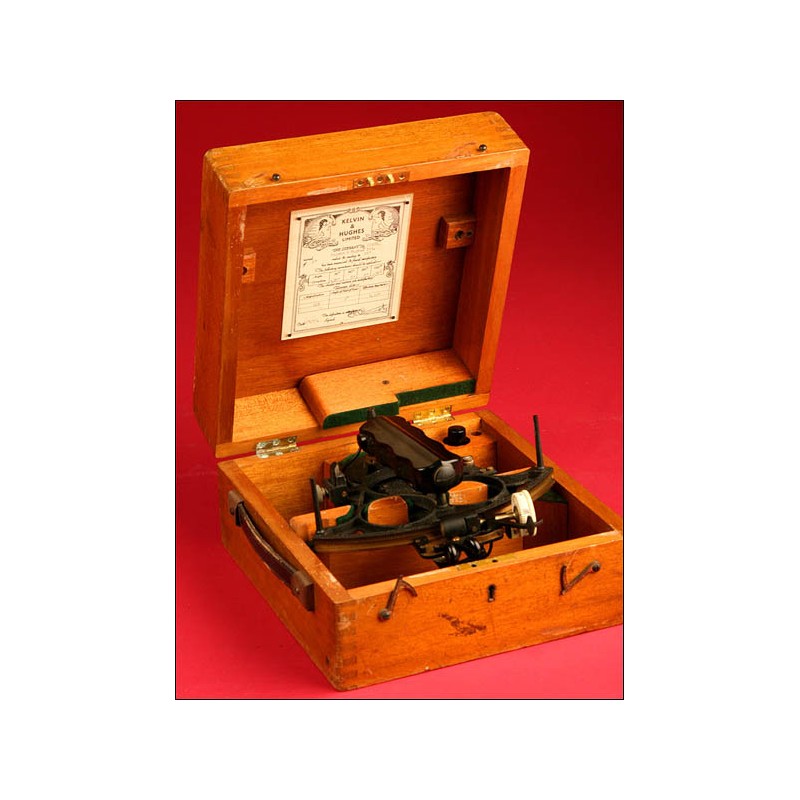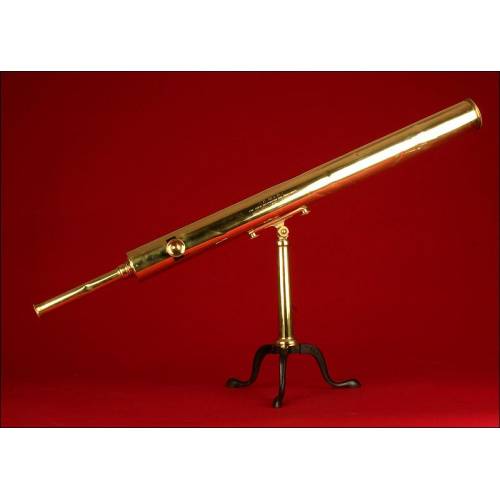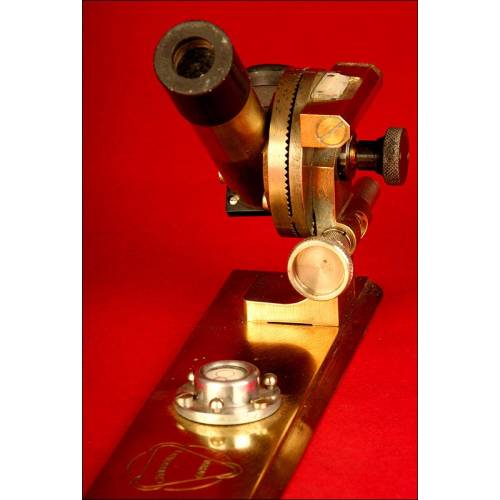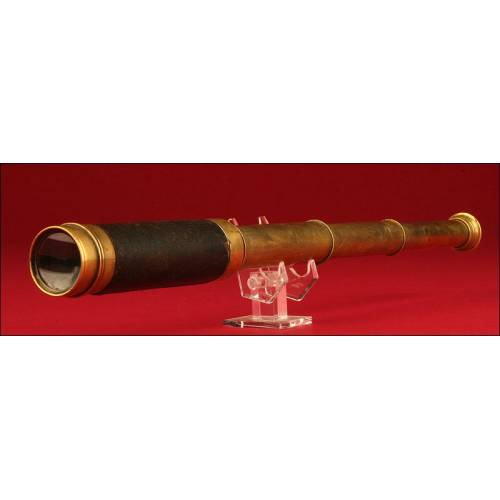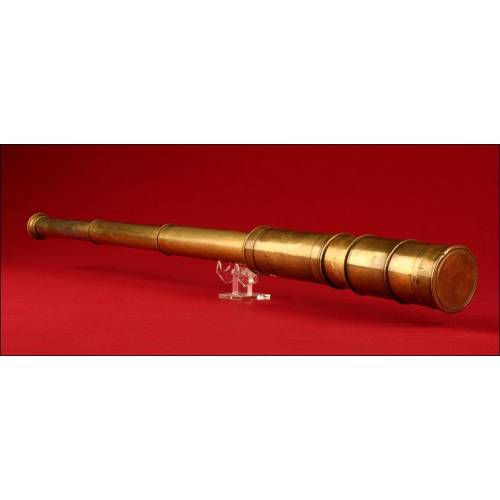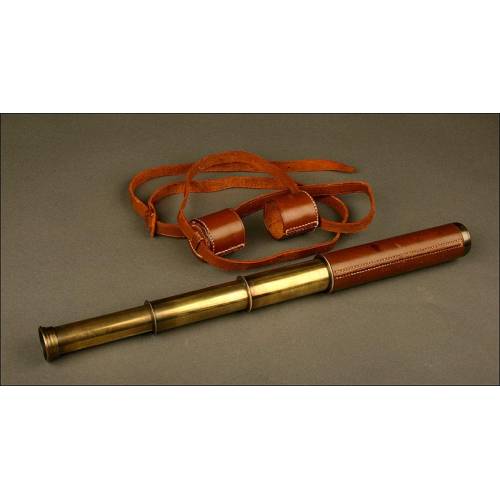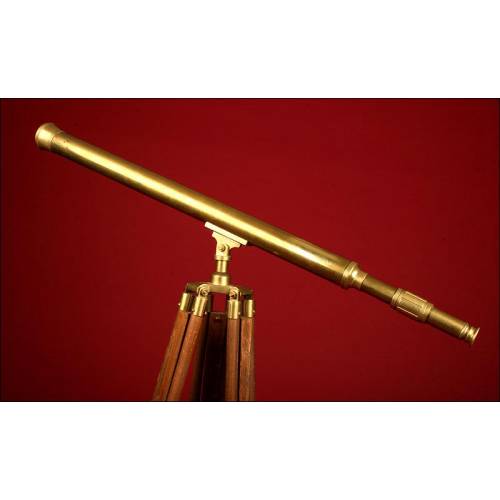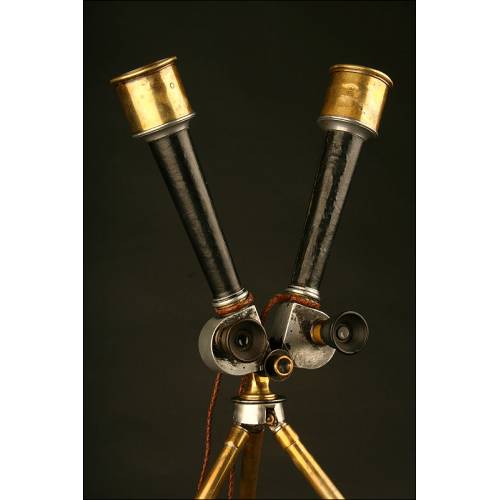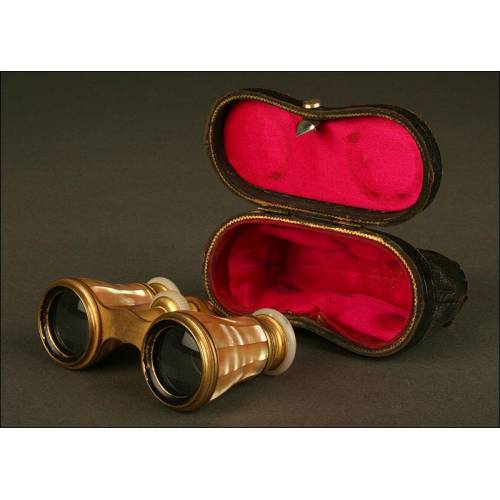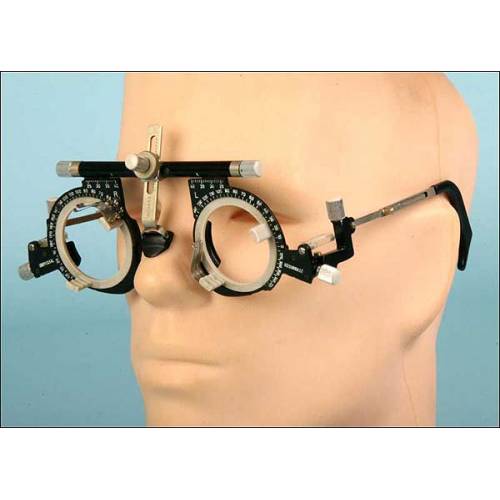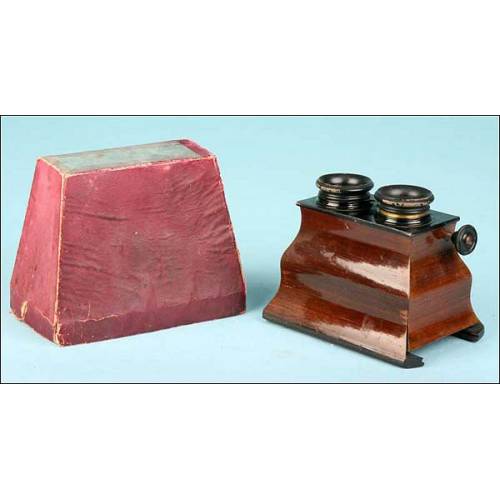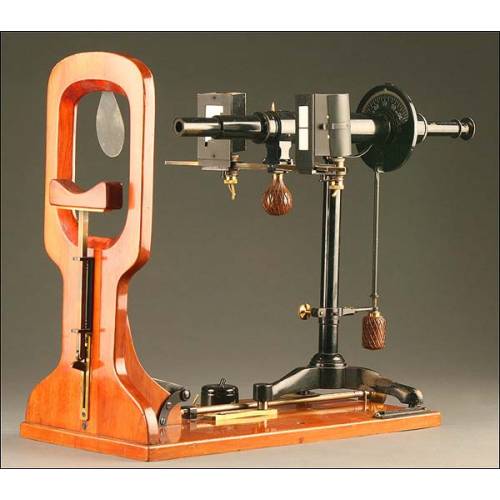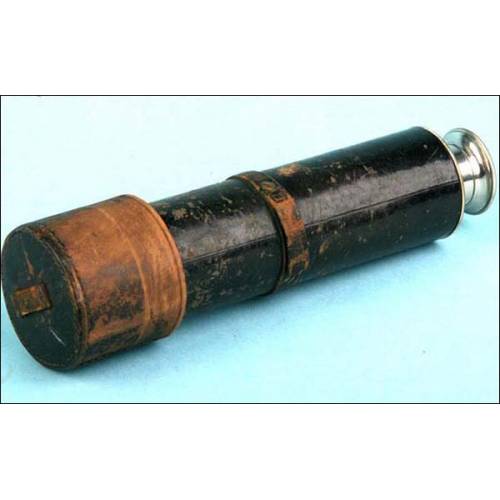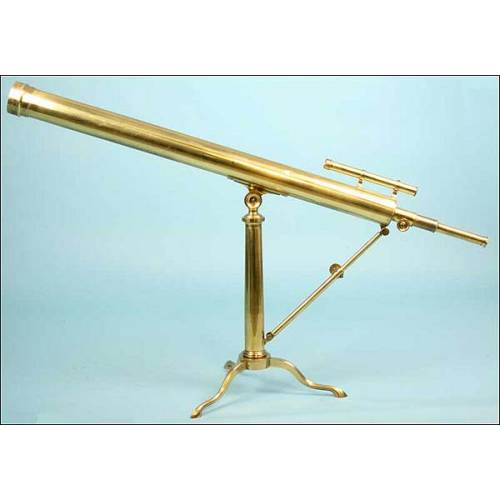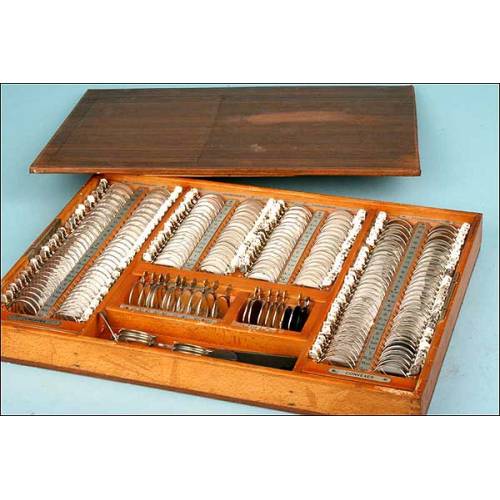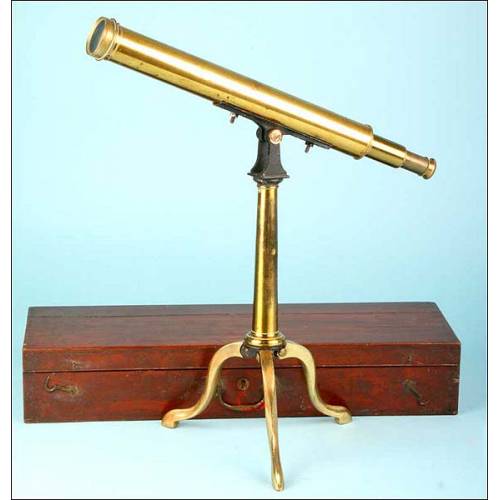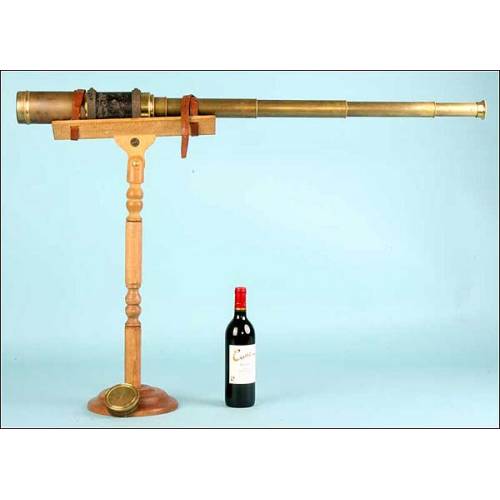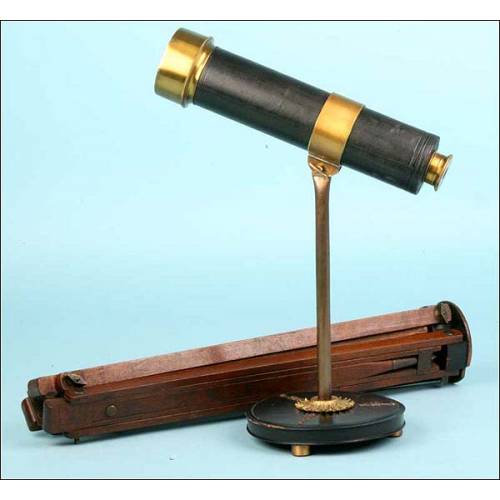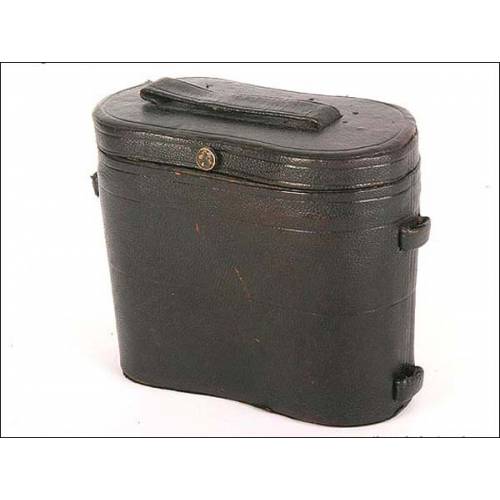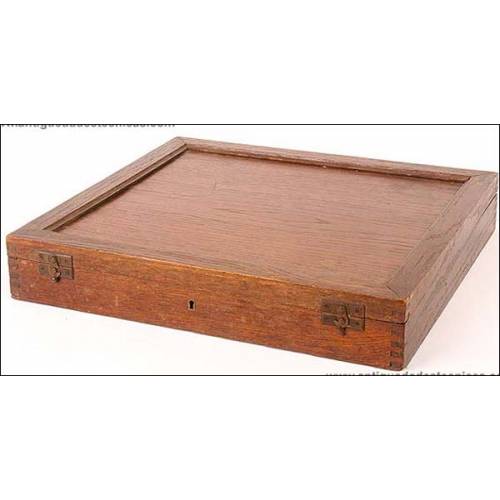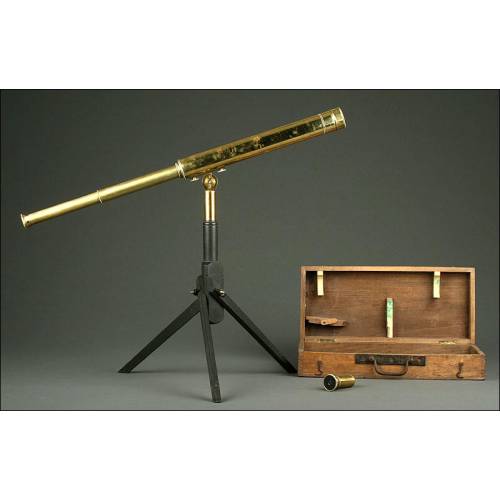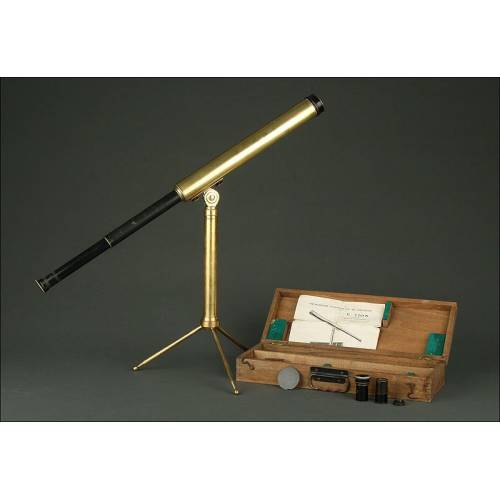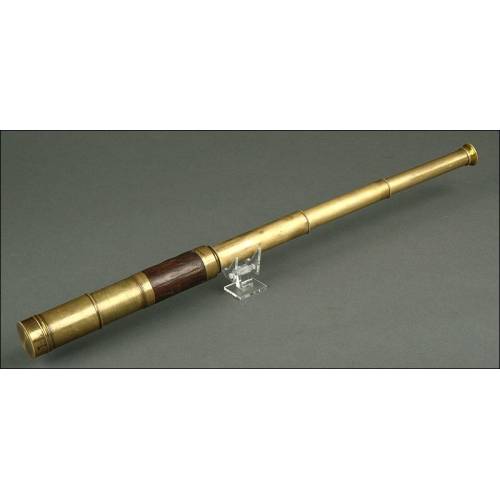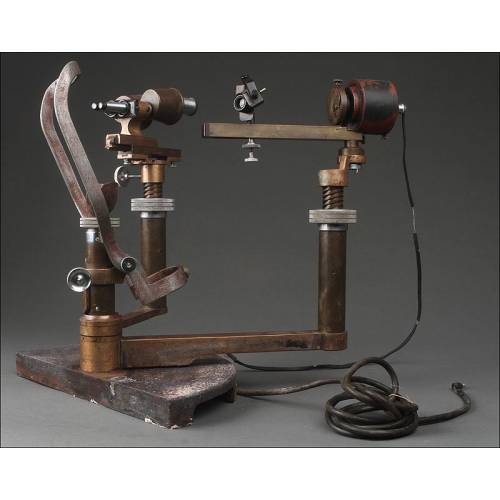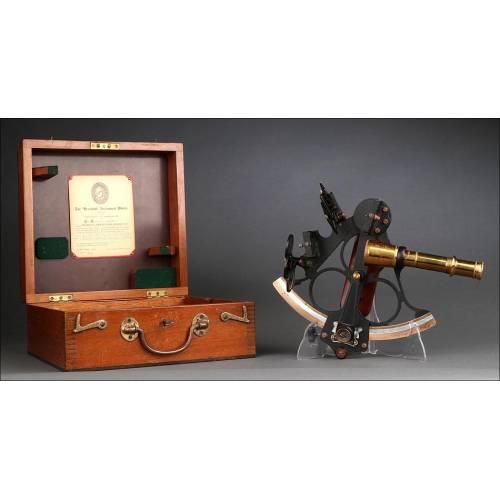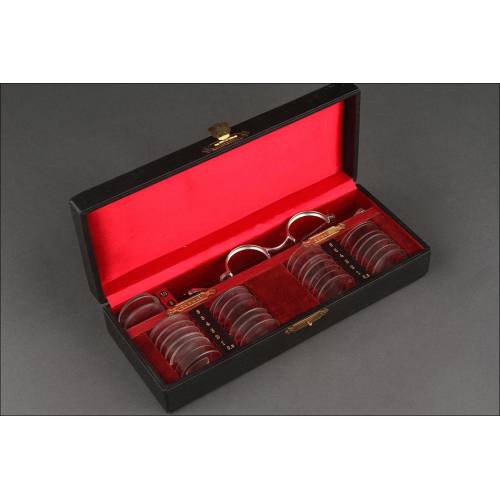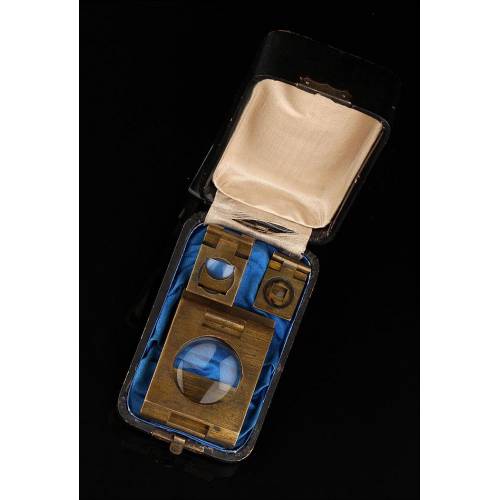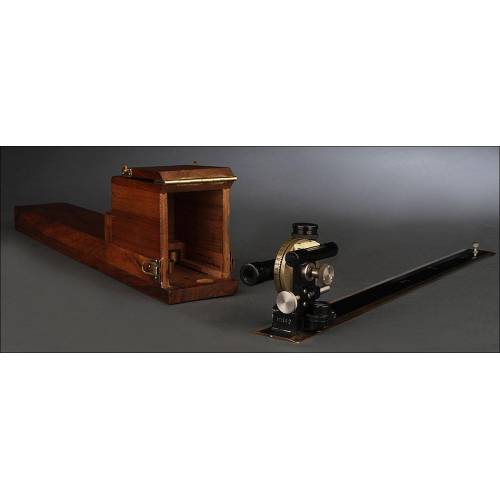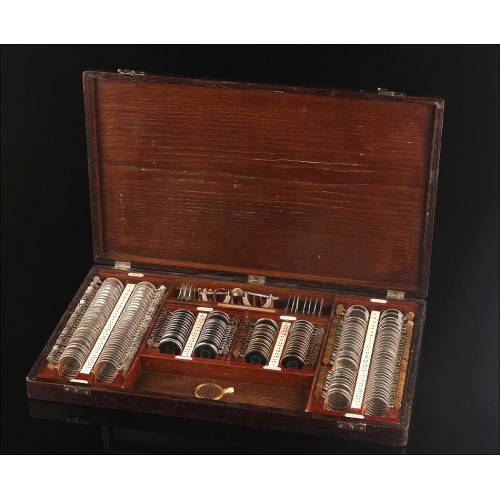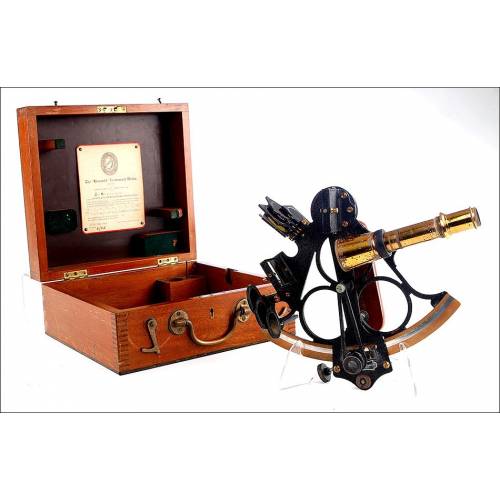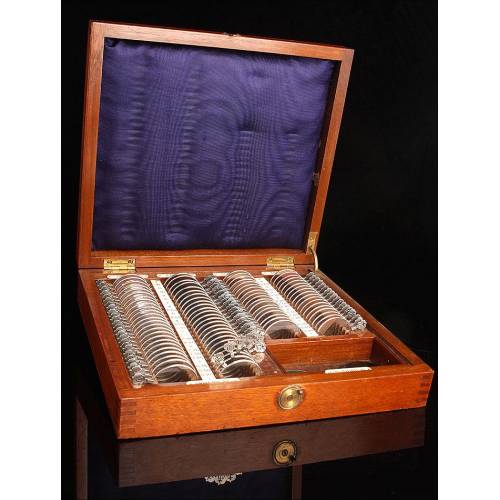989
Magnificent Kelvin & Hughes Marine Sextant. 1957
Kelvin & Hughes Marine Sextant. 1957
Sold!
Magnificent Kelvin & Hughes Marine Sextant Made in 1957. Lovely fruitwood case housing the fantastic sextant in good condition. The machinery enjoys excellent optics, mechanics, and cosmetics, except for some surface corrosion, indicating that it is an object that has had maritime employment, which certainly makes it more special. The central part lacquered in black and the silver insert disk stand out. On the bow is engraved "Made in Great Britain" which indicates its origin, as well as "Kelvin and Hughes Ltd Mate Ser No. 65181". The disc appears divided into sections from zero to 125 degrees. Attached index mirror, horizon glass, shades and telescope in excellent condition. The index arm, trademarked "KH", has a quick release clamp. The case and handle have slight marks of use, but it is in very good condition considering its history and the time elapsed for a device of its category. It has a rectangular plate on the inside of the top lid with the mark of the piece: Kelvin and Hughes Ltd, the calibration certificate dated "2/8/57", and the label attesting that it passed without problems the revision requirements of the time. It is a totally original piece, with signs of use, but perfect to decorate for its incredible aesthetics. The sextant is an instrument used to measure angles between two objects. It is applied to the distance between two points on a coast or a star, usually the Sun, and the horizon. By knowing the elevation of the Sun and the time of day, the latitude at which the observer is located can be determined fairly accurately. This determination is made quite accurately by means of mathematical calculations, simple to apply thanks to this apparatus. This instrument would replace the astrolabe as it had greater precision, becoming for centuries an indispensable object in maritime navigation, including air navigation. It lost its hegemony when, in the last decades of the twentieth century, more modern systems were imposed, thanks to the advance of technology, especially thanks to the determination of position by satellites. The name of the sextant comes basically from the scale of the instrument, which covers an angle of 60 degrees, or in other words, one sixth of a full circle. By applying the rotation of the mirrors, and thanks to the design of the sextant, it is possible to measure the elevation angles of the stars above the horizon and thus indicate our position. Kelvin & Hughes is still an important company today, which started out supplying chronometers and sextants to help navigate new worlds. They started out as two companies: the "Kelvin Bottomley and Baird" of Glasgow and the "Hughes & Sons" of London, competing in the pursuit of incredible technological gadgets, but eventually coming together in the late 1940's to form "Kelvin Hughes Limited", which would later become part of "Smiths" from the early 1960's. Beautiful collector's item in very good condition and loaded with history. Measures: 26 x 29 cm. Weight: 4 kg.

